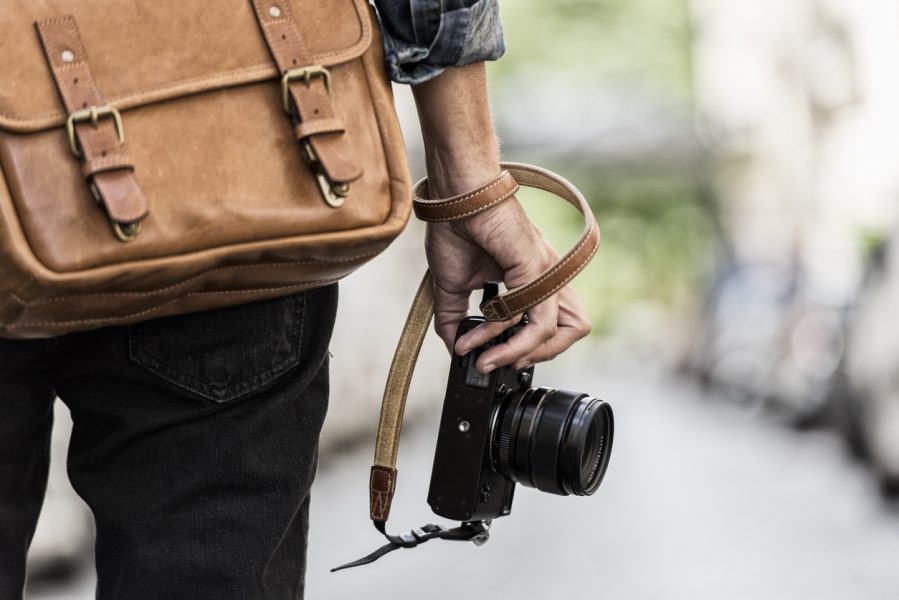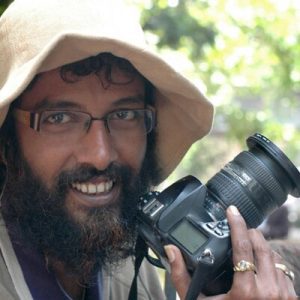
Behind the photographer’s lens lurk stories of neglect, despair, death

In 1998, Satish Malavade quit engineering to restart his career as a photojournalist. Such was his passion for the field that after completing a course in photography, he wouldn’t even rest on his week offs and venture out to chase stories. But now, decades later, Malavade says he wouldn’t recommend the career to any youngster as it is no more a sustainable profession than it was decades ago.
As a grim reminder of the state of affairs in the profession, on February 15, T. Kumar, a senior photojournalist of news agency United News of India (UNI) in Chennai committed suicide by hanging himself in his office. He was reportedly facing financial difficulties as he had not received his full salary for the past 60 months. Kumar, reports said, was struggling to meet the medical expenses of his wife who had met with an accident.

Getting back to Malavade, he is one of the photographers who had covered the November 26, 2008 Mumbai attacks and taken photographs of terrorists Ismail Khan and Ajmal Kasab during the shooting at Chhatrapati Shivaji Terminus. Despite warnings by cops, Malavade had entered the terminus along with a constable only to witness how the terrorists shot people one after the other. Inches away from being shot dead, he, despite being frozen with fear, lay flat on the ground and took the pictures of the terrorists.
“The only thing that was in my mind was to click as many pictures as possible of the terrorists. Shortly after, I rushed to my office and filed the photographs,” he reminisces.
The photographs were later used as evidence in court, not to mention the huge applause and awards they earned Malavade. Sadly, decades later, his impressive profile couldn’t help him safeguard his job. In January 2021, he left the media house he worked for.
“I spent almost six months at home. I had applied for numerous jobs even outside the field of journalism. But I did not find anything. Several companies sacked their employees and it was a tough period,” he said. Now, he is a freelancer as he could not find a job as a photojournalist.
Once famous, now castaway
The situation is almost the same for K. Anantha Subramanyam, a former photojournalist from Bangalore who took the pictures of the 2017 New Year eve party in Bengaluru where multiple women were eve-teased. His pictures stood as evidence for what happened on that day.
Subramanyam is also one of the few photojournalists who visited Sathyamanagalam forest to click pictures when Kannada film actor Rajkumar was abducted by dacoit Veerappan in 2000.
“Ever since I started my career in 1996, I have worked so hard as a photojournalist. Even during the COVID-19 pandemic, I was constantly in the red zone because I believed taking risks to document events was part of my job. But it did not help me when my company decided to reduce manpower. The company did not sack me, but they made a retainer and reduced my salary by more than 50 per cent. As my monthly financial commitments were much higher, I could not continue working there,” he said.
Quitting his job, he took up a role in the corporate communication department of a hospital group at the age of 52. But he still misses his old profession. “I would love to go back to the field. But I doubt if I will ever get a job. The field has already been deteriorating and the pandemic has fast-forwarded it by five years,” he added.
Photojournalists say the department of photography in a newsroom is the first target when a company decides to reduce its manpower. They say, photojournalism, which was once considered a glorious and important job, is now losing its sheen due to multiple reasons.
“Photos are considered very important and almost all the stories go with a photograph when I joined the field in 1971. Our photos would be carried in six to eight columns. Those days, we used to have film cameras and it used to be black and white pictures. The late 1990s saw the advent of colour photography and then came the digital cameras,” said SN Sinha, president of All India Working News Cameramen’s Association (WNCA).
The glorious era
He says, photography was in its glorious period between 1980 and 2000 when most of the newsroom had more than five camerapersons each and the company used to invest in equipment.
“National leaders including the prime minister and top officials knew the photojournalists by name, they used to act upon or react to our pictures and they used to wait for us during the ceremonies,” he said, recalling an incident in the mid-1980s when Rajiv Gandhi was the prime minister.
“The House was in session and photographers were not allotted space near the Parliament building to park our vehicles. We were angry and decided against clicking pictures of the prime minister when he stepped out of his vehicle. He saw us standing far off when he neared the gate and sent an official to call us. But when we refused to go, the prime minister himself walked towards us and asked what our problem was. When we explained the issue, he immediately asked officials to allocate parking space for us near the building,” he said, adding that numerous such incidents had taken place during that period.
But as time passed, with the emergence of television media and dominance of advertisement, the size and number of photographs started to reduce, he said.
“Now, everything has changed. The importance of both photographs and photojournalists has reduced. Newsrooms have started sourcing the photographs from agencies and other sources. No newsroom wants to invest in photography equipment,” he added.
Photographers say, while several media houses eliminated the photo editor’s post, many have also started reducing the post of photojournalists. Sinha said that more than 30,000 people in journalism – a good number of them are photojournalists – have either lost their jobs or taken pay cuts in the past few years.
Shrinking avenues for aspirants
The opportunity for many youngsters, aspiring to venture into the field, has also shrunk.
One such youngster is Samuel (name changed) who had to join a media house in Tamil Nadu as a reporter as he could not find an opportunity to work as a photojournalist despite multiple attempts. He, in fact, did a masters in professional designing and commercial photography from a reputed college and internships at multiple media houses.
“When I completed college in 2016, there was absolutely no vacancy for the post of photojournalist. As I am passionate about journalism and wanted to enter the field no matter what, I accepted the position of a reporter with a hope that I could jump to the photography department whenever chances arise. It has been more than five years, but I never got such an opportunity and after a period, I realized I would never get that opportunity,” he said.
Pointing out that reporters employed in rural areas were often expected to double up as photographers, he said it is difficult for a single person to approach a story through both the verbal and visual medium.
“One wouldn’t be able to do both the things simultaneously. If you force a person to do both, then the quality of either one of the content will be compromised. And, these days, the companies are fine with that. Most of the time, photos are carried only as a representational picture and do not tell any story of their own,” he explained.
‘Visual knowledge, narrative photography lost concepts’
A Raja Chidambaram, a former photojournalist said, “We have to invest at least ₹3 to ₹4 lakhs to purchase a good camera along with lenses as the company does not provide us cameras and it becomes impossible to manage the expenses with such a low salary. Not just our salary, even we are not treated on par with the reporters. Many of us do not want to struggle so much for almost nothing.”
Even today, visual representation of a story is unavoidable but not much importance is given to it, he said. “These days, when almost everyone has a smart phone with cameras, the companies are not interested in the quality of the images. They now accept photos that are taken on phones and shared multiple times as it is available instantly. As almost everyone takes a picture and shares it widely within a few seconds, the exclusiveness of our photos is lost,” he added.
As companies have the option of sourcing the photographs and when reporters themselves can take pictures in their mobile phones, they don’t want to hire a photojournalist at all, he said, adding that gone are the days when the newspapers carried about 10 pictures in an edition. “These days, hardly two to three pictures are being carried and that too just for representation purposes,” he said.
Along with feature photography, there is absolutely no space for narrative photography, said G Pattabiraman, a fellow of Magnum photos, Newyork, from Puducherry.
“As most of the editors are from the reporting background and do not have much visual knowledge, they don’t give importance to photographs at all. Instead they focus only on improving the verbal content. They don’t understand that visual content is equally important and it has been that way since the beginning,” he added.
Also, as most of the companies do not have any photo editors–who play a vital role in bringing out the uniqueness of the photographs–photographs are used just to fill the page, he said.
“Now, almost everyone has a smart phone with cameras. So, photos are circulated almost immediately. Also, a news organization carries the same stories in multiple platforms like digital and newspaper or digital and magazine. So, we need to take pictures in different ways based on the readers. For instance, most of the readers read online news on mobile phones and a photo is hardly seen for 20 to 30 second. But in the case of a magazine, it would be observed and studied in detail. So, one needs to multitask like taking both pictures and videos and constantly equip himself to survive in the field,” said a photojournalist.
Meanwhile, Mumbai press club had started an agency–picswire.com–for photojournalists who lost their jobs in recent times across the country. The agency will collect photos from the journalists and sell them to the media houses. Malavade said, they have been receiving good response both from the photojournalists and media houses.

